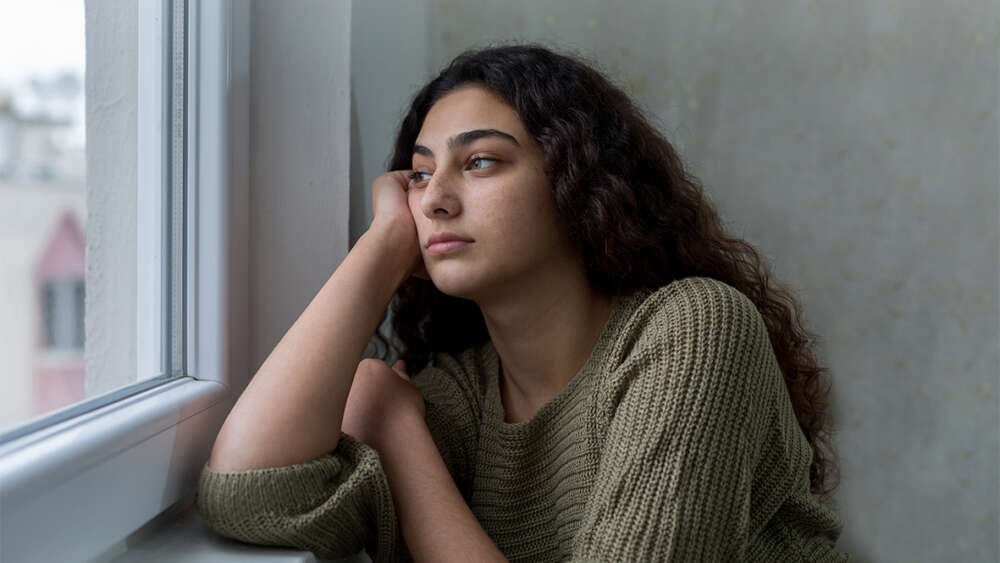The CEO of Mission Australia, Sharon Callister, has called on Australian Christians to “pray, volunteer and donate” to help ease the crisis of first-time youth homelessness.
She was responding to Mission Australia’s latest Youth Survey, which reveals almost one in 20 young respondents aged 15 to 19 were homeless for the first time during the COVID pandemic. Based on a sample of more than 20,000, the worrying finding is a significant increase since 2017, when almost one in 25 young people had recently been pushed into first-time homelessness.
“For a start, we can pray – prayer can be very, very powerful. We can volunteer, and that can be through our churches, providing support things through organisations like Mission Australia,” Callister says.
“Many of our services are not government funded, so people can also donate. And all of those three things – pray, volunteer, and donate – are easy things. It would be fantastic to get the community motivated to do all of those things.”
Today Callister is in Canberra attending a two-day National Homelessness Conference and meeting several government ministers. The Christian charity is delighted that the Albanese government last week committed to a new National Housing and Homelessness Plan, saying coordination between the states and territories is crucial. She also welcomed the government’s commitment of $10 billion to build social and affordable housing but said more investment was needed, particularly in rental assistance and youth-specific housing.
“They’ve committed to 30,000 social and affordable housing dwellings, which is terrific. But if I had my choice, we’d be having them right now,” she says.
Callister finds it heartbreaking that all the trends in youth homelessness are negative. “All homelessness is unacceptable, but we’ve moved from one in 25 in 2017 to one in 20 in 2021, which is when we did the survey.”
“They’ve committed to 30,000 social and affordable housing dwellings, which is terrific. But if I had my choice, we’d be having them right now.” – Sharon Callister
According to the report, Without a home: First-time youth homelessness in the COVID-19 period, young Australians who were first-time homeless, either with or without their families, recently spent time without a fixed address and were living in a refuge or transitional accommodation, or spent time away from home because they felt they couldn’t go back.
While COVID was one of the factors that drove them into homelessness, others included a breakdown of family relationships, psychological distress, family and domestic violence, unfair treatment, and discrimination. “These things, as well as COVID, are major contributing factors, and they’re not going away,” Callister says.
“It’s clear that for young people, homelessness can often be incredibly isolating, destabilising and traumatic.” – Sharon Callister
While, sadly, the findings are no surprise to Mission Australia and others working with young people during the pandemic, Callister insists we must not accept that this is the way things have to be.

Mission Australia is calling for more youth-specific housing.
The report highlights the harmful effects of homelessness for young people at a crucial time when they miss out on education and employment opportunities without the stability of a safe home. (See bullet points below.)
“It’s clear that for young people, homelessness can often be incredibly isolating, destabilising and traumatic. This can have a ripple effect on their lives without access to the right intervention,” says Callister.
Knowing that the risk factors include family conflict, poor mental health and discrimination, Mission Australia recommends strong intervention and preventative action beginning at the school level.
“There are things that can be done from a school level and a community level and a government level. For instance, if there was a commitment to implement universal screening for youth that are at risk across schools in Australia to pick up those things quickly, and to have specialist resources and skills in the schools, so that … we can provide tailored family support, counselling and guidance before the problem becomes big.”
Mission Australia is also pushing for the building of more youth-specific housing. As an example, she said Mission Australia recently built and opened an apartment block in Coffs Harbour, on the NSW mid-north coast, which has a bottom level designated for youth with common areas where they can interact and support each other without being mingled in with the adults on the other levels.
For Callister, as for anyone, data does not have the same impact as a personal story. And she felt very moved by meeting a 16-year-old homeless youth in Western Australia whose life had been transformed by a service called Youth Accommodation Support Services (YASS).
“He’d been to other organisations and tried to get help and support because he had been bullied and had a really tough time. And then he found his way to us, and he’s thriving,” she says.
“In this place, they’ve got counsellors and case managers, all of the kids are able to mix together when they want to, but they’ve all got their own rooms for privacy and for whatever that they need to do. He was telling me about his journey and now he’s back in school and he is learning and he seems so happy. And I thought, ‘Wow, if we can just do this for you, one person.’ You still don’t have a family. You still don’t have somewhere that will permanently be your home, but you are confident and you are really feeling supported living with us and it’s just transforming his life.”
Callister is keenly aware that for every service Mission Australia offers, there are an untold number of people who can’t access their services.
Some of the report’s major findings:
- Young females were twice as likely as young males to have gone without a safe home during the pandemic.
- Almost half (49.3 per cent) of young people who had been homeless for the first time during COVID-19 were personally concerned about family conflict and more than one-quarter (28.0 per cent) were personally concerned about domestic and family violence.
- More than half (55.5 per cent) of young people who had faced first-time homelessness experienced psychological distress. Alarmingly, almost one in three (32.1 per cent) young people who were forced into homelessness during COVID-19 felt very sad/sad, over a third (35.8 per cent) rated their mental health and wellbeing as poor, and a quarter (25 per cent) felt negatively about the future.
- More than half (55.6 per cent) of young people who had been recently first-time homeless stated they experienced unfair treatment or discrimination, mostly due to mental health, gender or sexuality.
- Close to half (45.4 per cent) of these young people said COVID-19 had harmed their friendships, and two in five (40.8 per cent) said their employment had been affected.
Email This Story
Why not send this to a friend?


